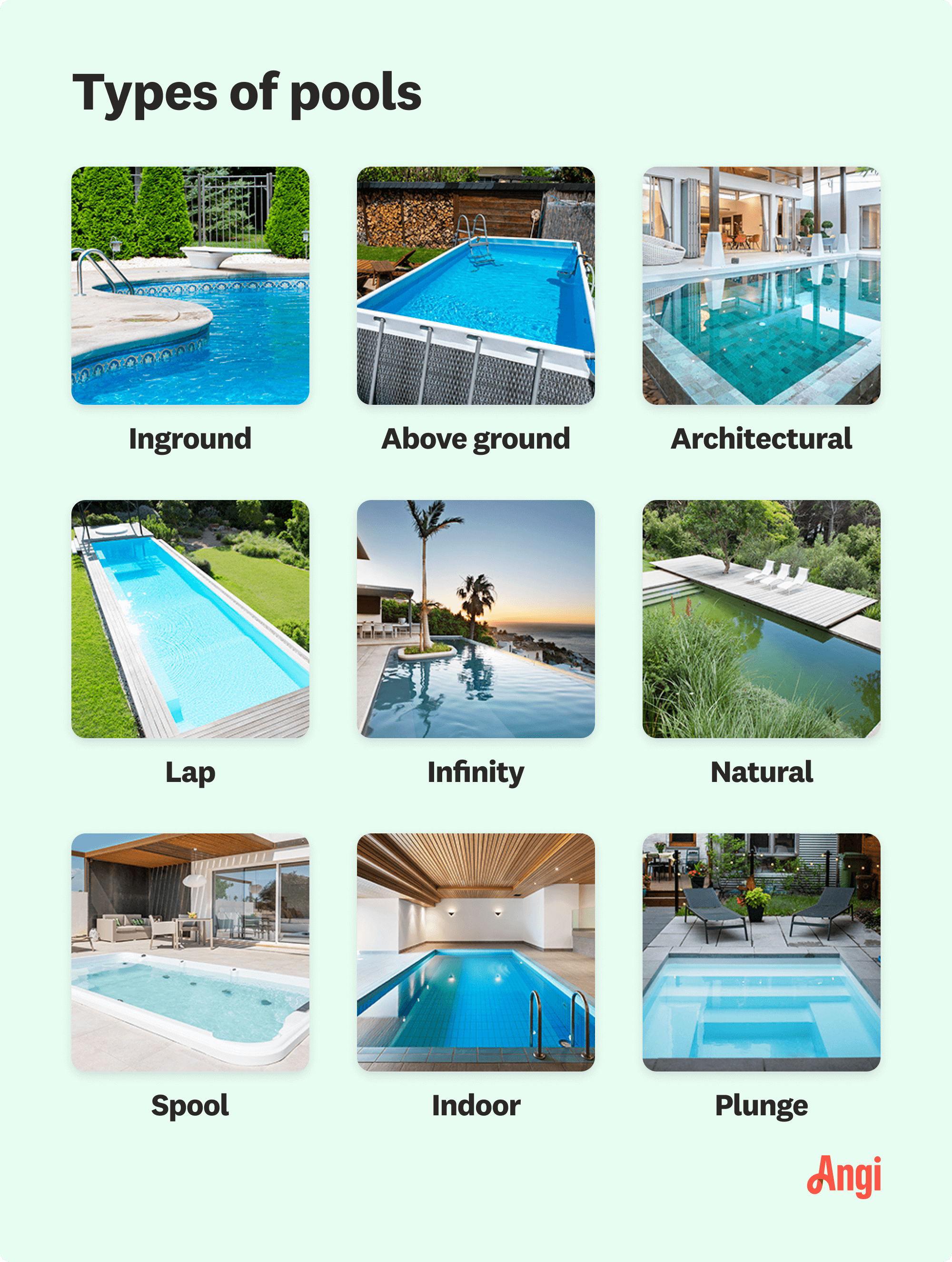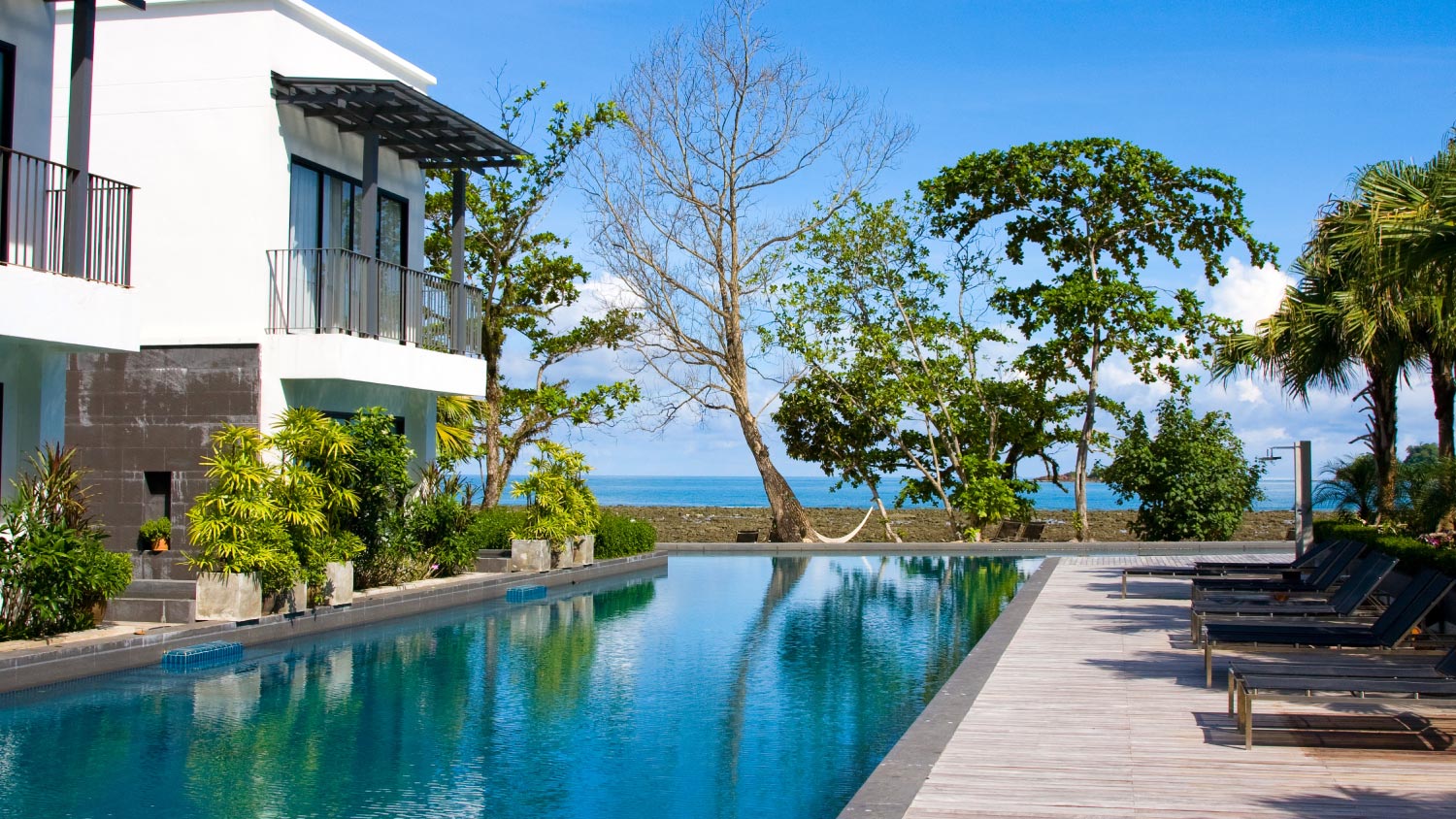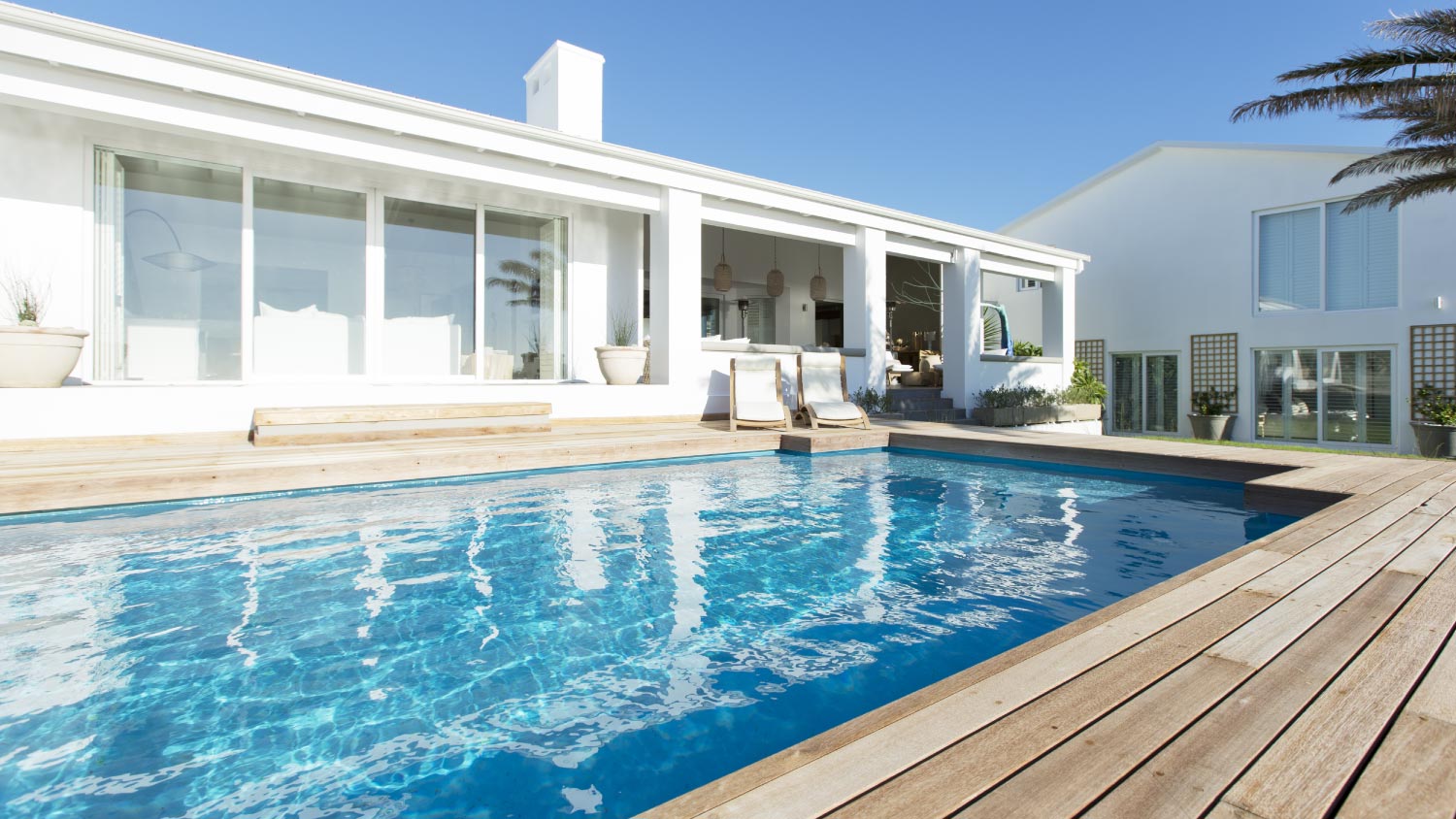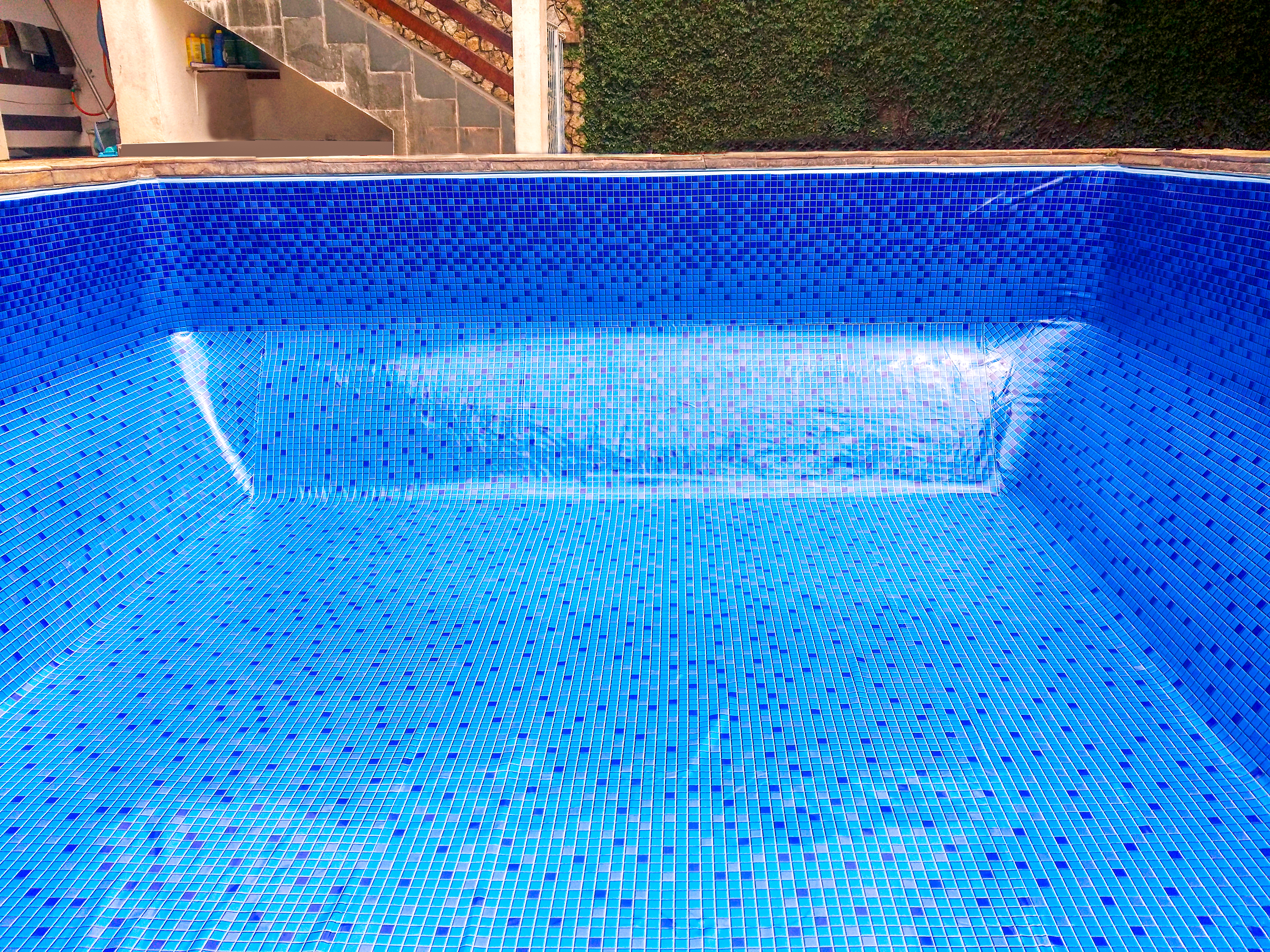
If you’ve been considering installing a new pool in the Buckeye State, this guide will help you understand inground pool costs in Columbus.
From laps to lounging, there’s a pool for all lifestyles


Hire a pool installation pro to help you decide on the best type of pool for your budget, space, and personal preferences.
While the cost of an in-ground pool is one of the more expensive options, it might make sense if you prioritize aesthetics and a strong ROI.
If you’re on a budget or have a smaller yard, go for a plunge pool, spa, or hot tub.
Architectural pools cost the most but have unique designs with features like waterfalls or fountains and maximum ROI.
Are you looking to add a splash to your backyard by putting in a new pool? These days, pools come in a range of styles and types, including natural pools, which don’t use any chlorine at all, and spools, which are a perfect blend of spa and inground pool. Before you call a local swimming pool installation company, explore these 11 types of swimming pools for your home.

Inground pools are likely the ones that initially come to mind when you imagine a backyard swimming oasis. These pools are permanent, fully set in the ground, built into your landscaping, and come in three main options: concrete, fiberglass, or vinyl liner. Most homeowners surround inground pools with a patio or ground-level deck.
| Pros | Cons |
|---|---|
| Best ROI | Decreased pool safety |
| Permanent | Most expensive |
| Aesthetically pleasing | Can increase home insurance |
Best For: Homeowners who want a permanent and aesthetically-pleasing pool to add to their landscape design
The cost to install an inground pool is around $55,000, on average. An inground pool is a good choice if you are looking to boost the ROI of your home and want more control over the design, as they come in more shapes and sizes than most types of above ground pools. Here’s a breakdown of inground pools based on three common materials.
Concrete: One of the most expensive inground pool options (averaging around $50,000), concrete pools are extremely durable and can be designed in virtually any shape or size you desire. They are also friendly to special features and designs. On the flip side, they will require resurfacing every 10 to 15 years, and their surface is rough, which can be hard on sensitive feet. In addition, the material is porous and prone to algae growth, so you should expect to spend additional money on chemicals and cleaning products, and pool maintenance will be more intensive.
Fiberglass: Compared to a concrete pool, a fiberglass pool has a smooth surface that mitigates algae growth and requires fewer chemicals, equating to a lower lifetime cost. The shapes and sizes you can choose from, however, are more limited, as they are usually made by the manufacturer and delivered in one piece. Typically, you can only extend a fiberglass pool up to 16 feet in one direction, and they can only be as deep as six feet. Expect to pay an average price of $40,000 for a fiberglass pool.
Vinyl Liner: Vinyl liner pools are budget-friendly (averaging $30,000) and can be designed in nearly any shape or size. They are made using panels that fit into a concrete foundation. In addition to design versatility, you will also likely save some money on chemicals and filters, as the material resists algae growth. That said, the liner will need to be replaced every seven to 15 years, which can increase your long-term costs and the amount of maintenance you’ll need to do. The liner is also susceptible to tears.
As the name suggests, an above ground pool sits above the ground, eliminating the need for pool excavation costs. The main benefit of an above ground option is the reduced cost to build the pool, thanks to the less intensive installation. They are significantly less expensive to install, costing around $1,850 to $5,000.
In addition, the installation process is much quicker, and since they don’t become a part of the landscape, they can sometimes be brought with you when you move. The main drawback is that they don’t look as elegant as inground pools (though you can of course design and decorate your pool deck for extra pizazz).
Above ground pools also don’t last as long, with an average lifespan of 10 to 20 years depending on the material. You’ll need to replace vinyl liners more often, usually around every five years.
| Pros | Cons |
|---|---|
| Very affordable | Decreased lifespan |
| Increased pool safety | Not as visually appealing |
| Fast installation | More maintenance |
Best For: Homeowners who want minimal upfront costs and don’t mind making some aesthetic compromises
Usually built at the same time as the rest of the home, an architectural pool is designed by—you guessed it—an architect. Given this, the pool often complements the home, using many of the same materials and aesthetic considerations, which can boost the value of the house itself.
Architectural pools are just as much of a statement piece as they are a practical way to enjoy your yard and get some exercise. They’re generally reserved for high-end homes, as they can get extremely costly, often costing hundreds of thousands of dollars.
In addition to costing more upfront than other types of pools, architectural pools are also more likely to come with higher running and maintenance costs. A big reason for this is that they’re more likely to be fitted with waterfalls, fountains, and other special features.
| Pros | Cons |
|---|---|
| Stunning aesthetic | Extremely expensive |
| Maximum boost to home value | Hard to retrofit |
| Also serve as decor | Often expensive to run |
Best For: High-end homes
Designed with the avid swimmer in mind, lap pools are not meant to encourage lazing about in the shallow end. In fact, they don’t typically have a shallow end and are deep throughout so you can dive in and swim lap after lap.
Lap pools are typically long and rectangular, ranging from 30 to 70 feet long, with a width as narrow as eight feet. If you have children, lap pools might not be the best option, as they’re more suited to exercise than they are to playing.
The average lap pool cost is around $44,000, which puts it at the higher end of the pool price range. This is largely due to the fact that they’re almost always inground and quite deep, so they require a lot of labor-intensive excavation.
| Pros | Cons |
|---|---|
| Great for exercise | Not ideal for play/lounging |
| Can be custom sizes | Relatively expensive |
| Aesthetically pleasing | Minimal ROI |
Best For: Avid swimmers and athletes who don’t need a shallow section for lounging

You may have seen or experienced an infinity pool at a beachside resort. Sometimes called vanishing edge pools or zero edge pools, they create a trompe l'oeil that makes it seem as if one edge of the pool extends down into a waterfall beneath it, without end.
These pools usually highlight natural beauty, such as the ocean, the forest, a lake, or something else spectacular.
Infinity pools are strikingly beautiful but costly—typically 30% more than the average cost of an inground pool. Your operating costs will also be significantly higher than a standard pool because you need to install a special high-performance, high-volume pump to move the water from the infinity edge back into your pool to maintain the water level.
| Pros | Cons |
|---|---|
| Gorgeous aesthetic | Expensive |
| Great for relaxing | High cost to run |
| Excellent ROI | Not ideal for playing |
Best For: Homeowners who want to relax and entertain in a pool with a striking aesthetic
If you’re looking to get away from chemicals, a natural pool is a great option, as it relies on plants to clean pool water. To build a natural pool, you’ll also need to build a regeneration pool, which contains water, gravel, and aquatic plants—such as water primroses and duckweed—as well as pumps to push the clean, regenerated water back into the swimming area.
This environmentally-friendly option requires a lot of acreage to build, but it can keep long-term costs down as you won’t have to purchase chemicals. Natural pools can also be ideal for people with respiratory issues, skin conditions, or who are otherwise sensitive to chemicals like chlorine.
The average price to install a natural pool is between $50,000 and $80,000, putting it well above the typical cost to install a pool.
| Pros | Cons |
|---|---|
| Reduced maintenance | Expensive |
| No harsh chemicals | Takes up more yard space |
| Environmentally-friendly | Challenging to keep balanced |
Best For: Homeowners with a nature-inspired aesthetic who want to avoid harsh chemicals

Another option to get away from traditional chlorine is a saltwater pool. While these pools do use chlorine to clean the water, the lower amount of chlorine comes from salt that has broken down; this process produces fewer chloramines than store-bought chlorine.
Chloramines are the byproduct of commercial chlorine that cause that familiar pool smell—as well as eye and skin irritation, on occasion. While saltwater pools usually require less maintenance than traditional chlorine pools, you will need specialized technicians to handle repairs, and they cost about 10% more than chlorine-based pools. You’ll need to invest in special equipment to handle the saltwater, which costs a few thousand dollars.
With that being said, saltwater pools are easier to balance and require less maintenance, so ongoing costs can be lower.
| Pros | Cons |
|---|---|
| Less chlorine | More expensive upfront |
| Less maintenance needed | Requires special equipment |
| More eco-friendly | Can still dry out skin and hair |
Best For: Homeowners who want less maintenance and don’t want as many chemicals in their pool water
While the terms are sometimes used interchangeably, a spa is technically a small, heated, inground pool while a hot tub is an above ground version of the same thing. Both are used for relaxation and hydrotherapy and often have jet features; neither offer enough space to swim around in, so they’re intended for lounging and relaxation.
Sometimes, spas are connected to larger inground pools, while hot tubs are standalone features with their own plumbing and electrical components. Hot tubs, because they are not built into the landscape, can be brought with you when you move, but they can be eyesores in your backyard and difficult to disguise into the landscaping.
Spas, on the other hand, can be integrated into the rest of your yard, but they cost more to build due to the excavation required.
| Pros | Cons |
|---|---|
| More affordable than pools | Very small |
| Above and inground options | Not ideal for children |
| Great for relaxation | High maintenance |
| Can be relocated | High running costs |
Best For: Adults who want a place to relax and unwind and don’t need room for exercise or play
A cross between a spa pool and a regular inground pool, a spool (which is a portmanteau of those things) is a smaller pool that has enough room to swim around, but also has whirlpool jets and other features of a spa.
Spools typically measure about 10 to 15 feet long and six to eight feet wide. It’s a nice option if you don’t have the room or budget for a larger inground pool but don’t want to settle for only a small spa pool. The larger size also makes them great for entertaining multiple people, although they’re still not ideal for homes with kids who are more inclined to play.
On average, the cost to install a spool pool is $22,650, but prices can range from $5,500 to $50,000 depending on size and features.
| Pros | Cons |
|---|---|
| Larger than spas | Expensive for size |
| Ideal for entertaining | High maintenance |
| Good ROI | High cost to run |
Best For: Homeowners who want to relax and entertain but don’t need space for play
If you live in a cold climate, you might consider an indoor swimming pool, which homeowners usually build for fitness or training purposes. However, indoor pools can also serve as entertainment for children.
While the idea of swimming year-round is tempting, an indoor pool will require special equipment to manage the higher humidity levels in your home, and, of course, a tremendous amount of extra space to be built inside. You’ll also see higher heating and cooling bills because you’ll need to maintain a comfortable and safe temperature year-round in the large, open room.
Indoor pools cost more than most other types of pools because you’ll also need to build a full pool enclosure and finish the space. You can expect to pay an average of around $95,000, but prices as high as $200,000 or more aren’t out of the question, depending on the materials and pool finish you choose.
| Pros | Cons |
|---|---|
| Year-round pool use | Very high upfront cost |
| Room for kids to play | High running cost |
| Less maintenance needed | Takes up living space |
Best For: Homeowners with a high budget and plenty of indoor space that want year-round access to their pool
Plunge pools are a type of small inground pool designed for relaxation. They’re typically shallow throughout, which helps bring down installation costs, since minimal excavation is needed. On average, you can expect the cost of a plunge pool to sit around an average of $20,000, but you could pay anywhere between $10,000 and $50,000, depending on the size and features.
They’re great for homeowners with small yards, and their sleek design allows them to blend in well with their surroundings. The smaller size also contributes to lower maintenance and cleaning costs.
Plunge pools aren’t ideal for exercise or for entertaining large parties, and while they might be suitable for smaller children, they’re not ideal for kids looking to play. Their main purpose is to help cool off and relax in the summer months.
| Pros | Cons |
|---|---|
| Low upfront cost | Not ideal for large groups |
| Sleek, modern aesthetic | Not much room for play |
| Lower ongoing costs | Can’t use to swim laps |
Best For: Homeowners with small yards who want a small, relaxing pool
C.E. Larusso contributed to this piece.
From average costs to expert advice, get all the answers you need to get your job done.

If you’ve been considering installing a new pool in the Buckeye State, this guide will help you understand inground pool costs in Columbus.

Knowing you have a pool leak is one thing, but finding it is another. We'll cover pool leak detection costs and what to expect from the repair bill.

The cost of pool liner replacement in Columbus depends on the size and shape of your pool, as well as the liner material and type. Here’s how the costs break down.

Dreaming of getting in those daily laps without tearing up your backyard? Here’s what to know about endless pool costs so you can plan your project.

When a murky mess interrupts your morning laps, you need to know how to clear cloudy pool water fast. These top cloudy water fixes will keep you afloat.

Learning how to drain a pool is just as important as all the other upkeep tips you've gathered along the way. Here's a step-by-step DIY guide.